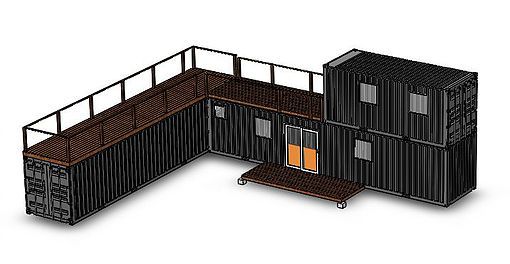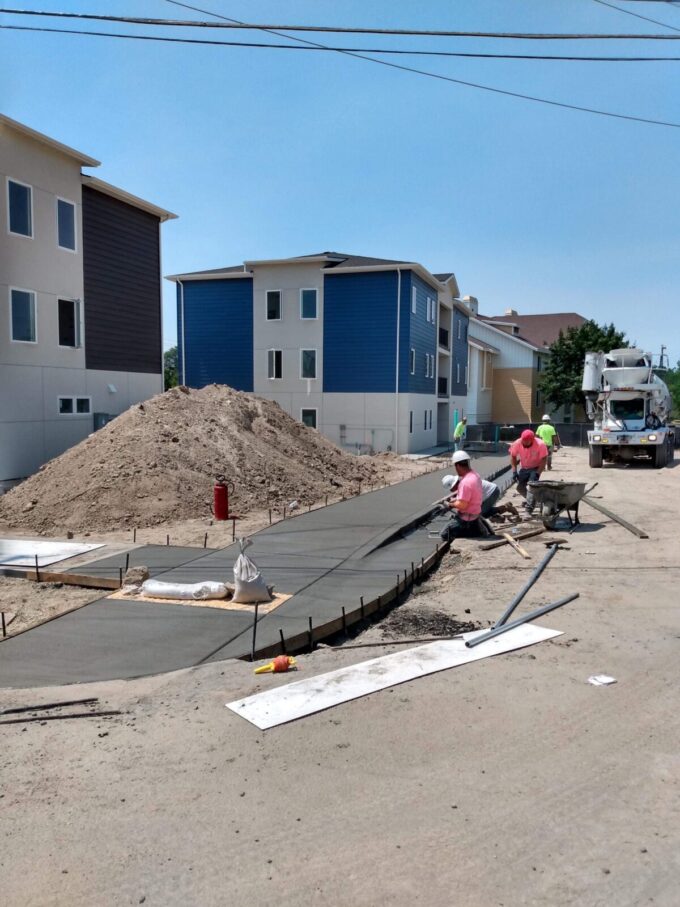The Trend of Using Shipping Containers in New Construction
Shipping containers have emerged as a popular trend in new construction, offering versatility and sustainability. Originally designed for transporting goods, these steel containers are now being repurposed for various building types, including offices, retail spaces, lodging, and residential housing. This article explores the diverse uses of shipping containers in construction, their advantages and disadvantages, and key considerations for owners.

Variety of Uses: From Office and Retail to Lodging and Housing
Shipping containers are being used in a wide range of construction projects. Offices made from containers offer a modern, industrial aesthetic and are often used for temporary or mobile workspaces. Retail spaces crafted from containers attract customers with their unique design, often becoming part of a brand’s identity. Container-based lodging, such as hotels and hostels, provides a cost-effective and modular solution for short-term accommodations. Residential housing made from shipping containers has gained popularity due to its affordability and rapid construction process. These homes range from single-container micro-houses to multi-container luxury homes.

Pros of Using Shipping Containers in Construction
- Sustainability: Repurposing shipping containers reduces waste and promotes recycling, contributing to sustainable building practices. Containers are also made from steel, which is durable and can be reused or recycled at the end of the building’s life.
- Cost-Effectiveness: Using containers can significantly reduce construction costs, especially when compared to traditional building materials. Mass-produced and readily available, containers make an economical choice for budget-conscious projects.
- Speed of Construction: Building with containers is faster than traditional methods. Prefabrication allows for quick assembly on-site, reducing construction timelines. This speed is particularly beneficial for projects with tight deadlines.
- Modularity and Flexibility: Shipping containers are modular, allowing for easy expansion and reconfiguration. Owners can stack, arrange, and modify containers to suit specific needs. This flexibility makes containers suitable for various projects, from temporary pop-ups to permanent structures.
Cons of Using Shipping Containers in Construction
- Insulation and Temperature Control: Shipping containers are made of steel, which conducts heat and cold. Without proper insulation, they can become extremely hot or cold, making temperature control a challenge. Owners must invest in high-quality insulation and HVAC systems to ensure comfort.
- Limited Space: The standard size of a shipping container (8 feet wide by 20 or 40 feet long) can limit interior space. Combining containers may increase costs and complexity. Owners must carefully plan the layout to maximize usable space.
- Structural Modifications: While containers are strong, cutting into them for windows, doors, and other openings can compromise their structural integrity. Reinforcement may be necessary, adding to the overall cost and construction time. Owners must work with experienced engineers and contractors to ensure structural stability.
- Zoning and Building Codes: Not all areas permit the use of shipping containers for construction. Zoning laws and building codes vary by location and may require modifications or special approvals. Owners must research local regulations and obtain necessary permits before starting construction.
Key Considerations for Owners
Owners considering shipping containers for construction must understand several key factors. First, they should assess the condition of the containers, as used ones may have rust, dents, or chemical residues. Choosing containers in good condition or refurbishing them is essential for safety and longevity. Next, owners should consider insulation and climate control, as inadequate solutions can lead to uncomfortable living or working conditions. Additionally, understanding local zoning laws and building codes is crucial to avoid legal issues. Finally, owners should work with experienced professionals who understand the unique challenges of container construction, ensuring the project is completed efficiently and safely.
Conclusion
The trend of using shipping containers in construction offers a range of benefits, from sustainability to cost-effectiveness. However, it also presents challenges such as insulation, space limitations, and regulatory hurdles. By understanding the pros and cons and considering key factors, owners can successfully leverage shipping containers to create unique, functional, and sustainable buildings. By following these guidelines, owners can make informed decisions and capitalize on the benefits of container construction. EVstudio has designed numerous projects using shipping containers and can help you determine if they fit your project.
References
- U.S. Green Building Council. (2023). Sustainable Construction with Shipping Containers. Retrieved from USGBC
- Architecture & Design. (2022). The Growing Trend of Shipping Container Buildings. Retrieved from Architecture & Design
- American Institute of Architects. (2021). Modular and Prefabricated Construction: Shipping Containers. Retrieved from AIA







